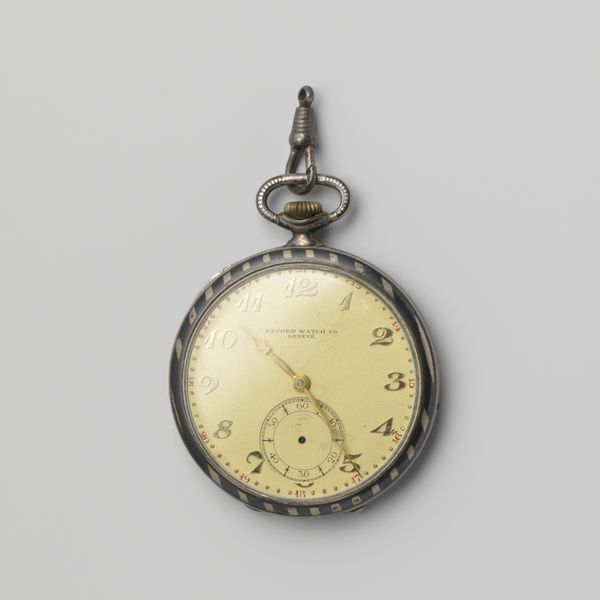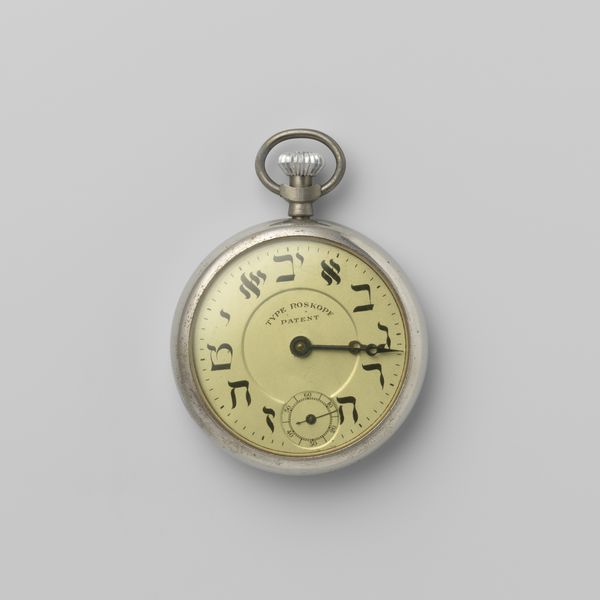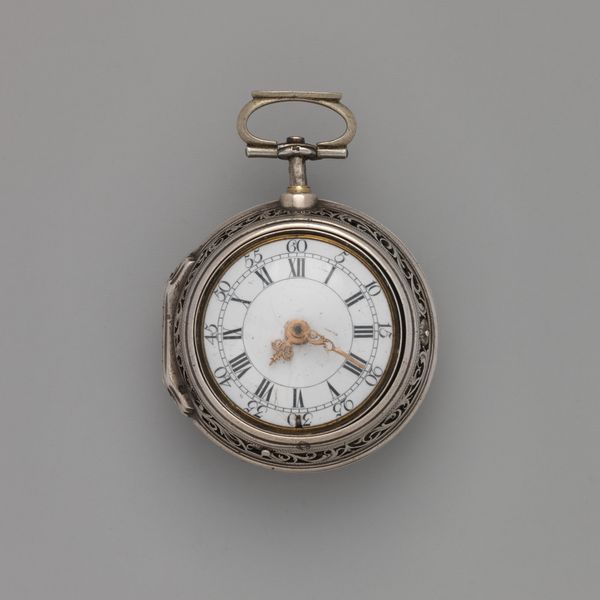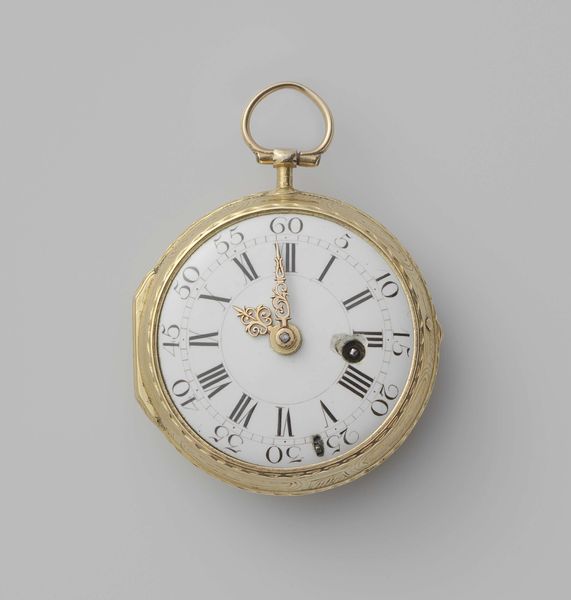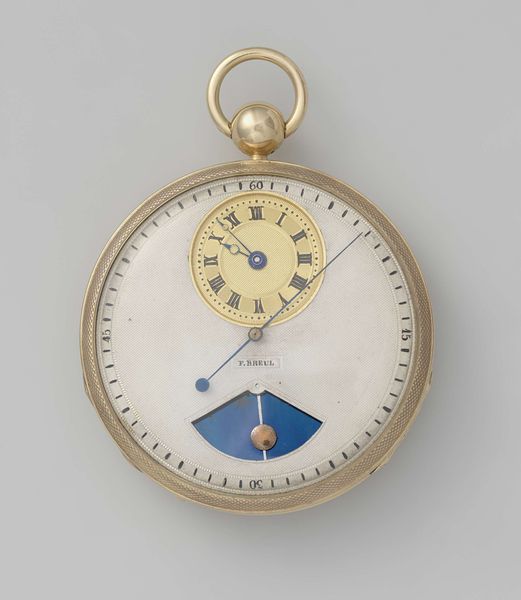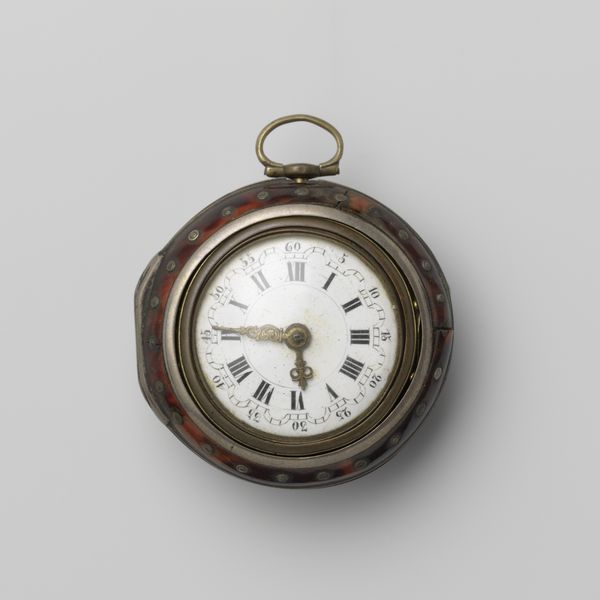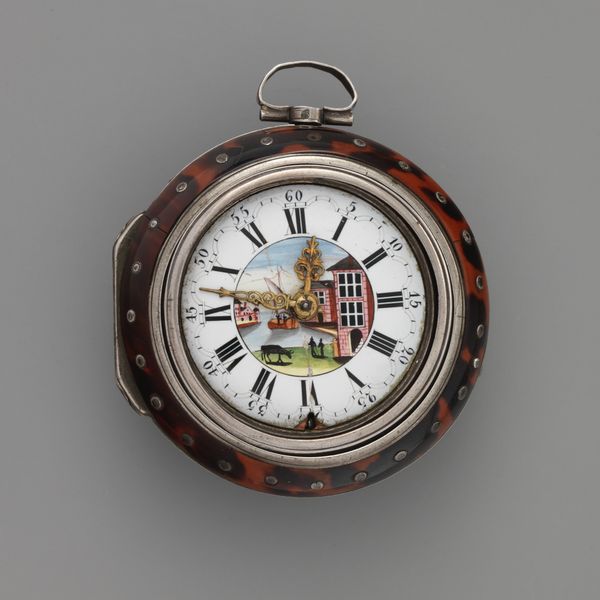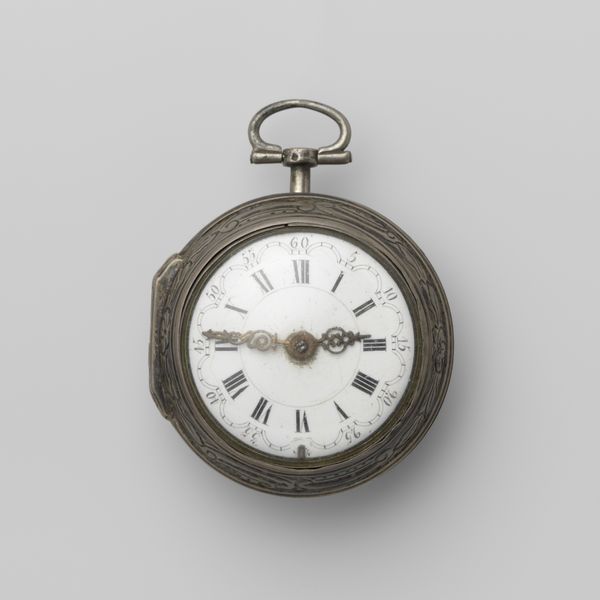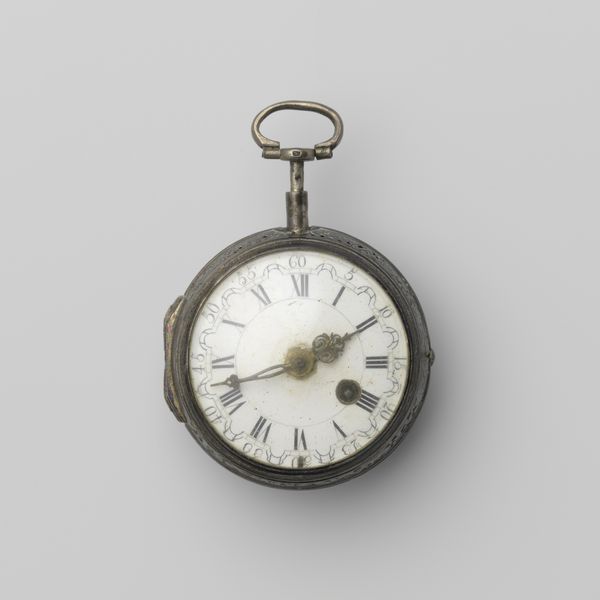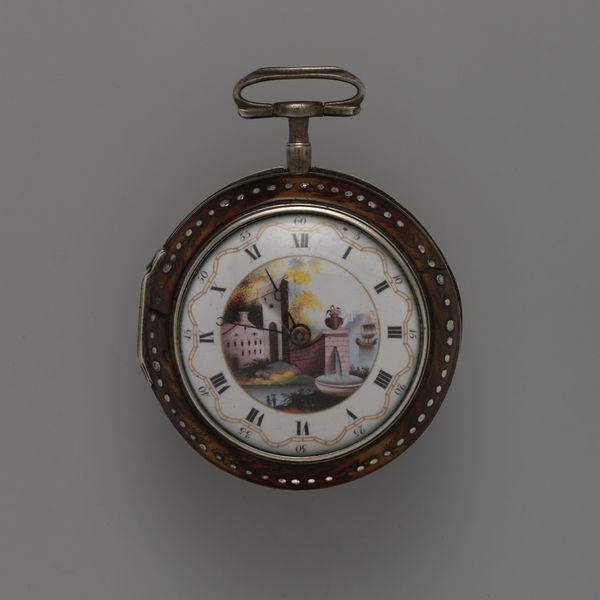
Dimensions: height 7.0 cm, width 4.5 cm, depth 2.5 cm, diameter 4.5 cm
Copyright: Rijks Museum: Open Domain
This pocket watch, made by Joseph Fly, features a painted scene on its face, connecting personal timekeeping with broader social landscapes. Notice the buildings depicted, likely a grand estate, suggesting wealth and status. The figures in the foreground further emphasize this social hierarchy, with their leisurely activities hinting at a life of privilege afforded by the exploitation of other social classes. The watch, beyond its functional purpose, becomes a statement about the owner's position within this society. Crafted in an era where time was increasingly commodified, the pocket watch was not merely a tool, but also a symbol of control and power. By carrying this image on their person, the owner reinforced and displayed their connection to the values and structures of their time. To fully understand this piece, we might research the specific estate depicted or explore the socio-economic context of watch ownership in that era. It reminds us that art objects, like this watch, are embedded in and reflective of their social context.
Comments
No comments
Be the first to comment and join the conversation on the ultimate creative platform.


